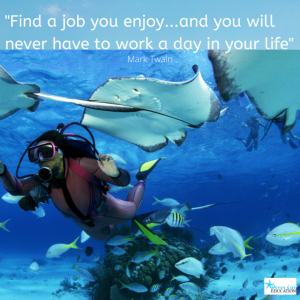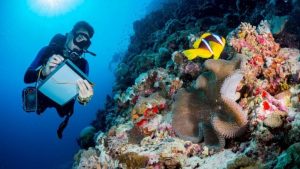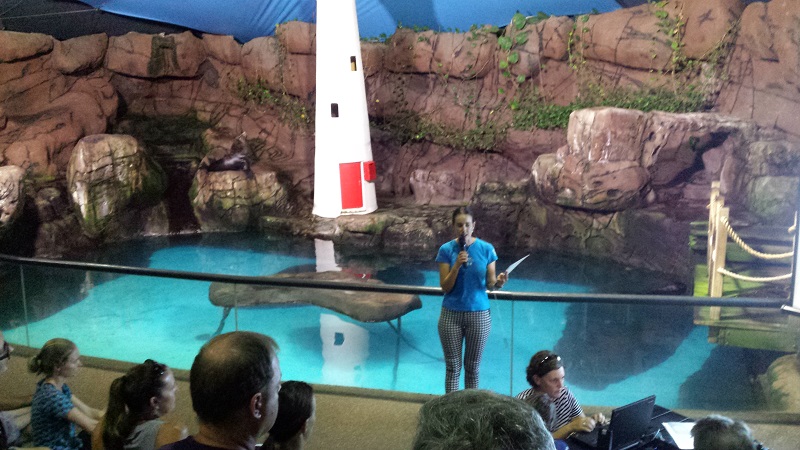Interested in the ocean but not sure how to turn that interest in to a career you’ll love. Read on to find out all you need to know about how to become a marine biologist in Queensland…
What is Marine Biology?
 Marine biology is the study of ocean life – organisms and ecosystems in saltwater environments. Marine Biologists study interactions between marine plants, marine animals and coastal areas and the atmosphere. Marine biology is a broad term which includes many specialisations.
Marine biology is the study of ocean life – organisms and ecosystems in saltwater environments. Marine Biologists study interactions between marine plants, marine animals and coastal areas and the atmosphere. Marine biology is a broad term which includes many specialisations.
What does a Marine Biologist do?
Marine Biologists are research based, so research projects are the main focus (as well as ocean education). These involve collecting specimens at sea, compiling research data, and laboratory-based experiments. Research areas may include human impact on reef systems, migration patterns and the underwater ecosystem.
Where could I work as a Marine Biologist?
Marine Biologists can work in many research and education specialisations. These include conservation and marine parks, fisheries and the fishing industry, planning and management, universities, museums, marine science institutions, power generation (sustainable please!), engineering and consulting government and industry.
Key responsibilities of a Marine Biologist:
- Developing, planning and carrying out experiments
- Operating tracking technology, fishing nets, sonar and remotely operated vehicles.
- Using specialist computer software to aid data interpretation
- Writing research papers and reports.
Skills Required to Become a Marine Biologist
- Patience and determination
- Excellent problem-solving skills
- Finding solutions to challenges whilst out on the ocean – sea legs required!
- Practical skills – boat handling, scuba diving and first aid knowledge
- Thorough attention to detail
- Team working and interpersonal skills
Research Skills for a Career in Marine Biology
 Marine Biologists must be able to conduct successful research and complete a literature review, plan a research question, design the study, collect and analyse data and accurately publish results.
Marine Biologists must be able to conduct successful research and complete a literature review, plan a research question, design the study, collect and analyse data and accurately publish results.
Teamwork & a Career in Marine Biology
Marine Biologists rarely work alone. So, they need to be able to work as part of a team and communicate well with everyone. Communication and coordination are key attributes.
Observation Skills for Marine Biologists
Marine Biologists spend extended periods of time observing and studying ocean life. Therefore, they need a passion for this in order to generate new ideas for research and understandings about how sea life works.
Analytical Skills for a Career in Marine Biology
Excellent research means analysing in a new or insightful manner so Marine Biologists need to be able to decide which analytic methods would prove most useful to a particular set of data.
Qualifications required to Become a Marine Biologist
A degree in marine science, biology, geology, ecology, oceanography or zoology is usually required, followed by a Masters to work in a research position. Many marine biologists collaborate with universities and also teach when not out working on research projects in the field, whilst others work for consultancies, coastal authorities, charities and aquariums.
Where can I study for a career in Marine Biology in Queensland?
You can study for a career in marine biology in the following universities in Queensland:
- University of Queensland
- James Cook University
- Griffith University
- Southern Cross University (external studies)
Check out some of our inspiring programs and courses to start getting the knowledge:
Online courses – Amazing Sharks & Humpback Whales



